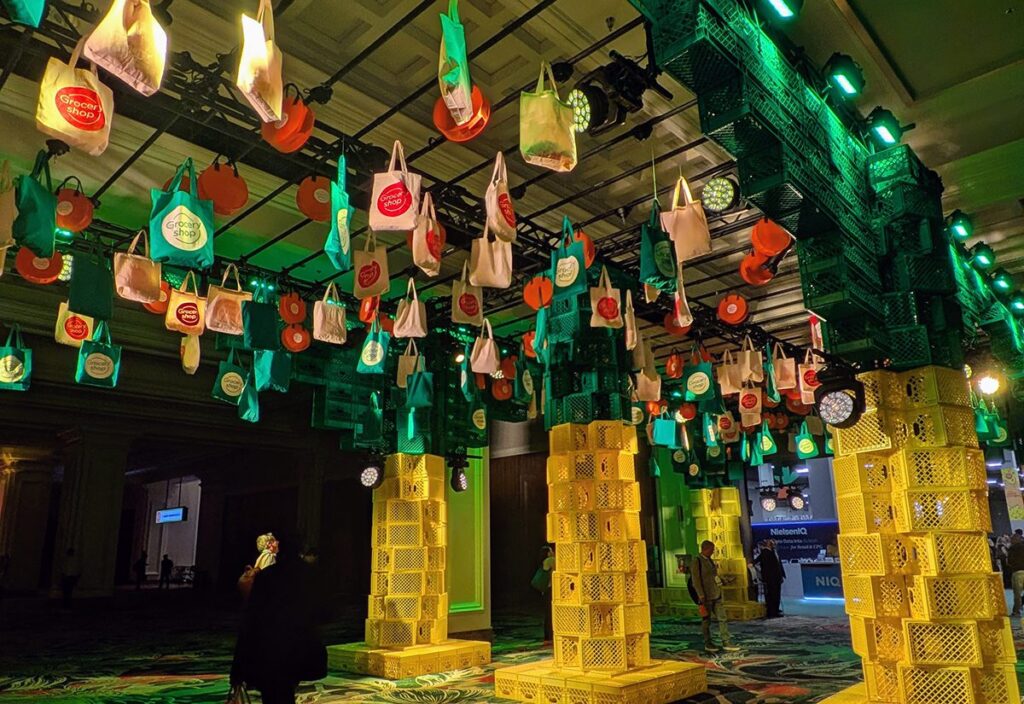Everyone is selling convenience these days. That means new competition for traditional convenience stores, and new opportunities for packaged goods marketers. C-store leaders are testing hybrid formats and expanding foodservice offerings as grocers, drugstores and quick-service restaurants encroach on traditional c-store turf. That’s because retailers of all stripes are focusing on consumer need, rather than classic definitions of channels.
“There’s this continuously accelerated blurring of formats to meet consumers’ need states — whether consumers need to grab and go, or do weekly shopping, or stock up for savings,” says Don Stuart, partner with consultancy Cannondale Associates, Wilton, CT. “It’s not channel definition, but consumer need that’s behind it.”
All retailers are adding consumable goods to prompt more frequent visits. Packaged goods are especially attractive because they’re easy to handle, says John Rand, senior analyst for retail consultancy Management Ventures, Inc., Cambridge, MA. “Some products, like wine and prepared food, require a certain level of expertise. But in the space that everyone touches — those products that don’t need special expertise to prepare or sell — everybody plays. C-stores are being fired on from all directions.”
Rand calls it “the Walgreens trend,” since that drugstore chain’s product mix and site selection (on easy-access street corners with heavy commuter traffic) “take dead aim at c-stores.” (By contrast, mass merchandisers’ grocery aisles compete more with supermarkets, not c-stores.)
The whole blur leaves retailers struggling more than ever to differentiate their stores. That’s got CPGs helping c-stores set marketing strategy and product mix using supermarket and foodservice brands. A few manufacturers are even providing private-label goods: SAB Miller’s BevCo is brewing Santiago Cerveza de Oro beer just for 7-Eleven.
Some CPGs are also beefing up their customization budgets to give retailers account-specific packs, promos and P-O-P. Budgets for customized packages and P-O-P have doubled in three years for some marketers, Stuart says. CPGs now spend an average 2% to 3% of gross sales on customized marketing, about 10% of their total marketing budgets, he says. Custom packs and P-O-P are a good way for CPGs to help c-stores differentiate their outlets while building visibility for brands on shelf.
C-store sales rose 2.7% in 2002, up $7.6 billion to $290.6 billion, reports the National Association of Convenience Stores (NACS). But profits fell 24.3% to an average $20,400 per store. Gas accounts for 62.4% of c-store sales, a total $181.3 billion in 2002, per NACS; merchandise sales were $109.3 billion last year. Foodservice sales hit $13.4 billion in 2002, with coffee sales at $3.7 billion, NACS reports.
The highest-margin products are in the store, not the parking lot, so c-stores are working hard to bring customers inside.
“C-stores have so much traffic, and it’s very predictable. The challenge is to bring people inside and increase indoor sales,” says James Ferguson, senior VP-client services at CoActive Marketing, AOR for Procter & Gamble’s c-store coffee program and for c-store chain Dairy Mart Convenience Stores. “The last few years, c-stores have evolved tremendously from gas, beer, cigarettes and candy. They’ve had to expand their demographics.”
C-store chains have reached beyond blue-collar workers by improving store cleanliness, lighting and brand image among white-collar families. Many now draw a wider audience with fresh prepared food. They cater to consumer needs by daypart — with an assist from top packaged goods brands. “Retailers are really using manufacturers’ money to grow specific dayparts,” Ferguson says.
Take breakfast: P&G’s foodservice coffee program leverages Folgers and Millstone brands as c-stores upgrade coffee bars to drive morning traffic. P&G and Cincinnati-based CoActive help chains design and stock their coffee bars. P&G sets product and marketing mix, then brings in other foodservice suppliers for baked goods and other foods. P&G funds strategic work and initial design; retailers use their own marketing money to fund refurbishing, merchandising and P-O-P. Cincinnati-based P&G has helped Fas Mart, Git-n-Go and Dairy Mart upgrade their coffee bars, and sales have jumped 15% to 60%, Ferguson says.
Proprietary branding helps differentiate chains. 7-Eleven launched its private-label beer, Santiago Cerveza De Oro, in July to take advantage of its own growing beer sales, up 5% this year. After mulling it over for two years, 7-Eleven decided to carve a niche with an import rather than cannibalize domestic-brand sales. The El Salvador import comes from BevCo, part-owned by SAB Miller. 7-Eleven is even licensing one of its best-known brands to other marketers: The chain began licensing Slurpee in September, its first foray into licensing. The Slurpee brand could spill into apparel, toys, housewares and collectibles selling through mass and specialty retailers. The Beanstalk Group, New York City, handles licensing deals.
“Licensed products will extend the brand experience beyond the drinking occasion and evolve Slurpee trademark into a lifestyle brand,” says Dick Garrison, 7-Eleven’s managing director-business development, in a statement.
Licensed goodies let 7-Eleven “leverage its positioning as the brand that represents refreshing fun,” adds Beanstalk chairman Seth M. Siegel in a statement.
Meanwhile, c-stores are tweaking their own formats. Dallas-based 7-Eleven teamed with Chevron USA to test co-branded outlets this summer to see how consumers like the brands combined. Of the 20 test stores in California, Florida and Texas, nine were Chevron stations that adopted the 7-Eleven brand for their c-store format, and 11 were 7-Eleven units that added Chevron gas. (7-Eleven already had 30 stores selling Chevron gas in the U.S. and Canada.)
At the same time, quick-service restaurants are adopting their own c-store formats. McDonald’s Corp. is testing a handful of Tik Tok Easy Shops, a shed-sized self-serve kiosk that rents DVDs and sells packaged food, milk and toiletries (but not fast food). At least one of the kiosks, testing in and around Washington, DC, goes by the name Redbox and sits in a McDonald’s parking lot. (Others are on street corners or in apartment buildings.)
San Diego-based Jack in the Box now has 14 Quick Stuff c-stores, each next to a full Jack in the Box restaurant and a gas station (all operated by Jack in the Box). Plans call for another 19 sites by the end of fiscal 2004. The restaurant and c-store share a common foyer and bathrooms. Current Quick Stuff stores are in Arizona, California, Illinois, Louisiana and Texas. Up to 25% of Jack in the Box units added over the next five to seven years to include a Quick Stuff c-store. (Jack in the Box also runs smaller units in 40 gas stations in the West and South.)
Jack in the Box got into the c-store business to spread development costs among the restaurant, gas and c-store businesses at the same high-traffic locale. Quick Stuff is a crucial piece of a “re-invention” begun in September, slowing expansion of flagship Jack in the Box restaurants and focusing on building Quick Stuff and a fast-casual Mexican chain Qdoba Grill — two opposite tangents from Jack in the Box’s traditional QSR business.
Supermarket leader Kroger Co. also maintains its own c-stores, using the same distribution centers for both formats. Kroger has six chains (a total of 792 stores) in 16 states; they accounted for 2.7% of Kroger’s total 2002 sales.
Even traditional c-stores differ widely — roadside gas stations and neighborhood markets draw very different shoppers. Some marketers segment stores to target specific audiences. One global tobacco giant formed a three-year joint venture with consultancy Cap Gemini Ernst & Young to develop a global database of individual stores, profiling each on customer demographics and psychographics. That let brands target trade promotion funds more effectively, zeroing in on stores that best served a brand’s target audience. (The database also covers hotels, restaurants and bars.)
On the flip side, c-stores hungry for consumer data are eager for manufacturer research on consumers’ habits within a product category, in and outside c-stores. The marketers who offer the best data and tools to help c-stores keep their niche are mostly likely to win marriage with convenience.
Top Ten Sellers
- Cigarettes
- Foodservice
- Packaged beverages
- Beer
- General merchandise
- Candy
- Fluid milk products
- Other tobacco
- Salty snacks
- Packaged sweet snacks
Source: National Association of Convenience Stores



